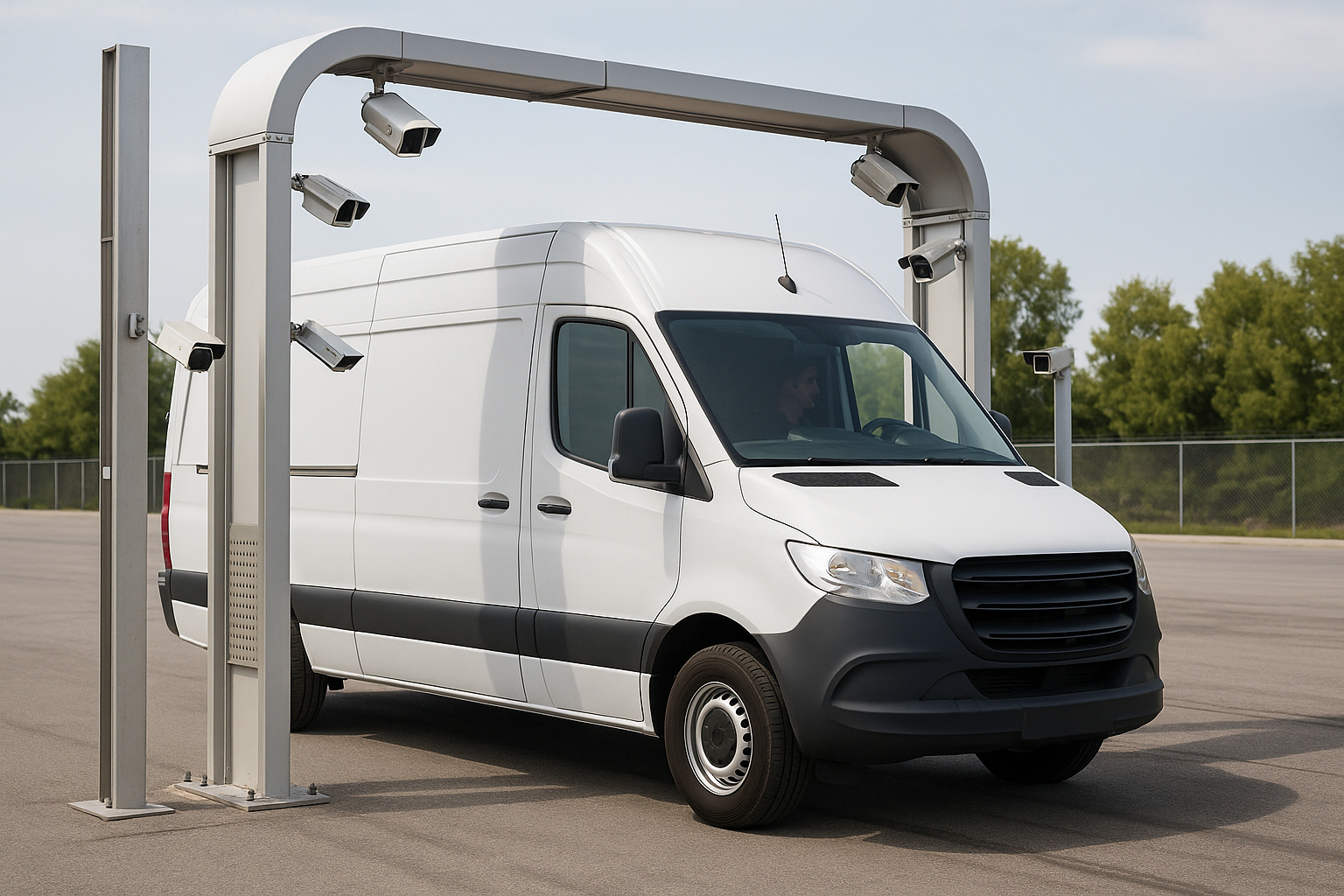In the fast-paced world of last-mile delivery, ensuring that each delivery vehicle is safe, roadworthy, and properly maintained is essential. Currently, Amazon uses a DVIC (Daily Vehicle Inspection Checklist) system, where drivers manually inspect vans and report issues through a mobile app.
While this approach satisfies basic compliance, it often varies in quality and efficiency depending on the driver’s experience, time availability, and understanding of what to look for. In high-volume stations where 100+ vans operate daily, automated vehicle inspection systems (AVIS) offer a promising alternative worth exploring.
Manual DVIC – Useful but Limited
Manual inspections through mobile apps are low-cost and easy to implement. However, challenges remain:
Advantages:
- Low setup cost
- Accessible to all drivers via mobile
- Meets basic regulatory compliance
Limitations:
- Inconsistent quality due to varying driver awareness
- Time-consuming, potentially impacting dispatch schedules
- Human error and missed issues
- Lack of real-time data aggregation for maintenance planning
Automated Vehicle Inspection Systems (AVIS): A Smarter Alternative
AVIS solutions typically involve a drive-through hub with cameras, AI software, and sensors that scan vehicles automatically — identifying issues such as:
- Body damage
- Tire wear
- Leaks or fluid trails
- Undercarriage issues
- Emission anomalies
As the van passes through, these systems record the inspection in real-time without requiring driver interaction.
Potential Benefits:
- Standardized inspections for every vehicle
- Instant fault detection and maintenance alerts
- Time saved during vehicle dispatch
- Improved compliance documentation
- Fleet health analytics over time
When Does AVIS Make Sense?
While each Delivery Service Partner (DSP) may operate 25–30 vans, a single Amazon delivery station often sees 100+ vans in daily rotation. This scale offers a compelling case to explore automation.
| Station Fleet Size | AVIS Suitability |
|---|---|
| 1–20 vans | Manual DVIC is sufficient |
| 20–50 vans | Hybrid (manual + mobile AI app) could work |
| 50–100+ vans | AVIS becomes cost-justified and operationally efficient |
The larger the fleet, the greater the return on investment in reduced downtime, fewer missed issues, and streamlined dispatching.
A Shared Opportunity
While implementation decisions rest with Amazon, both Amazon and DSPs could benefit from the added visibility and consistency AVIS provides. DSPs can gain better control over their repair costs and downtime, while Amazon can improve the overall safety and reliability of its branded fleet.
This is especially relevant in stations where:
- Vehicles cycle in and out continuously
- Damage tracking is inconsistent
- Quick turnaround is essential for route coverage
Final Thoughts
The current manual inspection process has served the last-mile ecosystem well, but with increasing volumes, complexity, and operational pressure, it's worth evaluating automated inspection systems as a long-term enhancement.
Whether or not AVIS becomes a standard in the future, the technology holds significant promise in improving fleet health, safety, and efficiency at scale.
